NENDO-MICHI of JIN KATAGIRI ~NIPPON local the soul of clay vol.19~
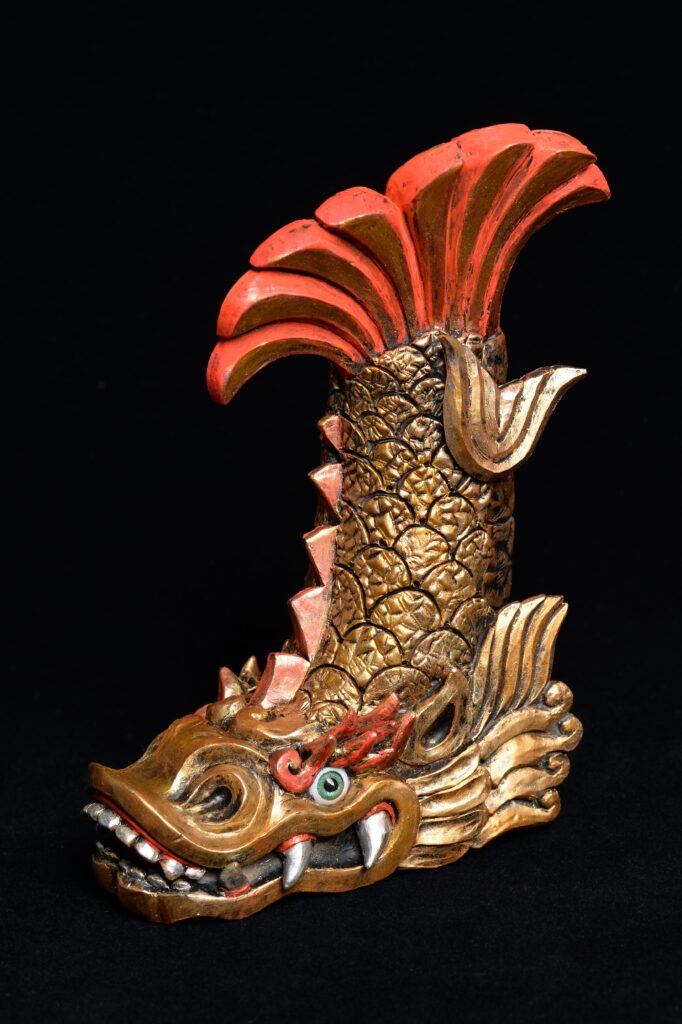
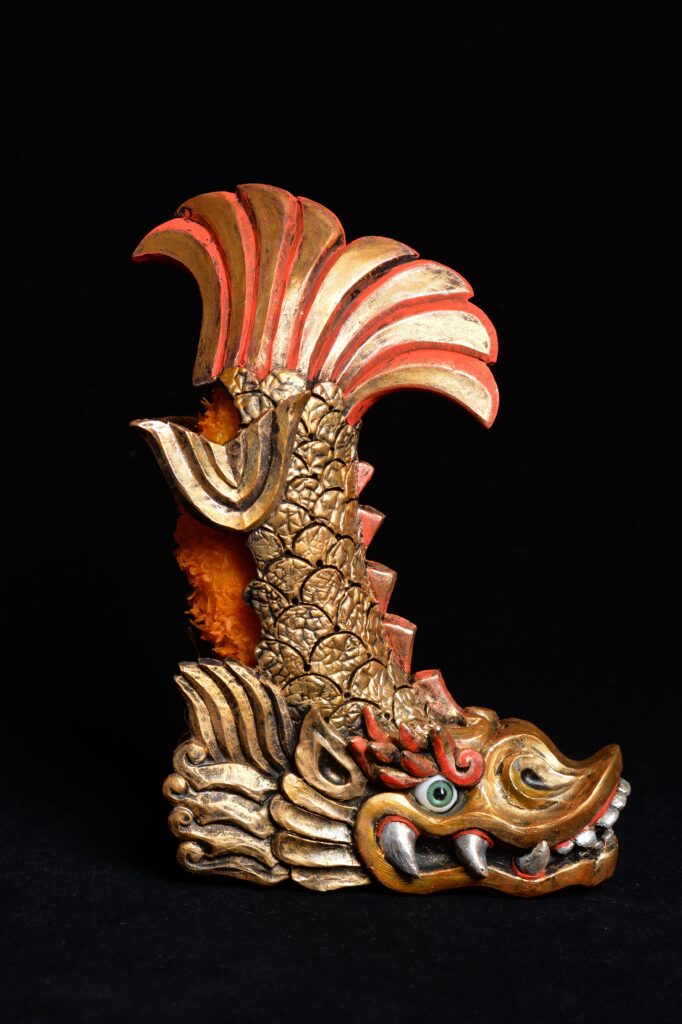
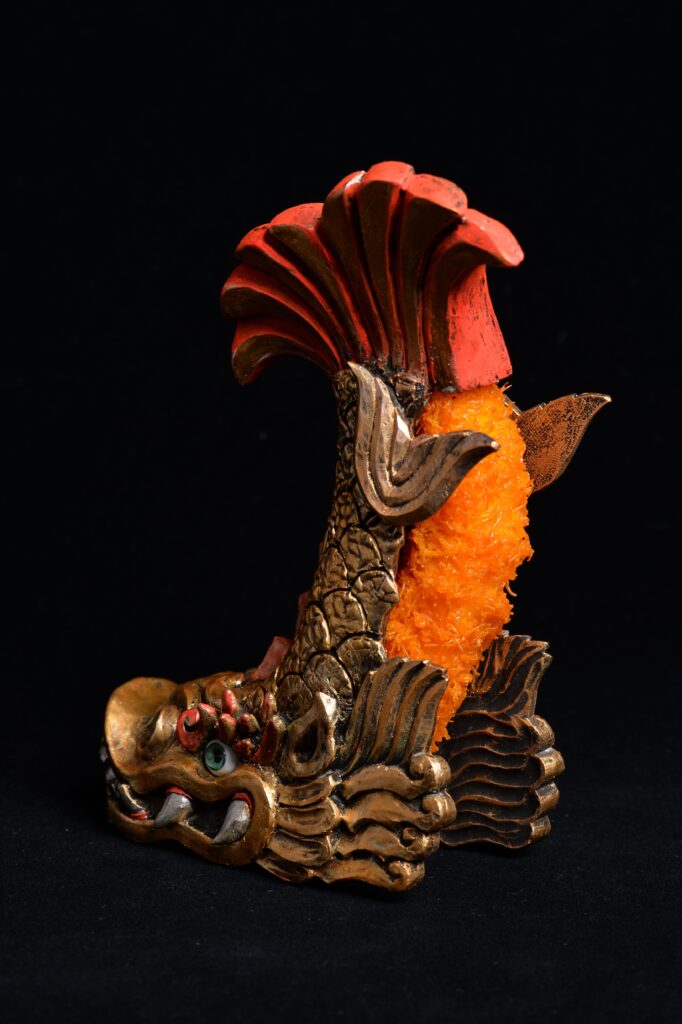
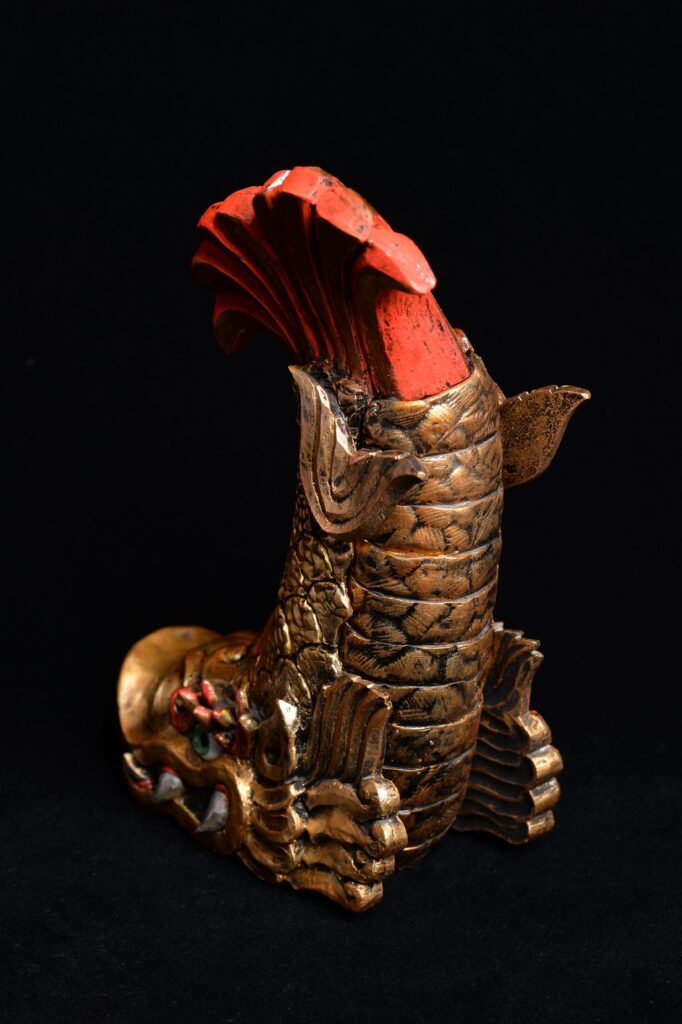
法量:縦×幅×奥行=280×120×55(mm)
材料:エポキシパテ、スカルピー、ドールアイ
Legal size: Length x Width x Depth = 280 x 120 x 55 (mm)
Materials: Epoxy putty, Sculpey, doll’s eyes
2016年作の名古屋のご当地作品。シャチホコをモチーフにした作品は、2009年に作った『シャチーン』という、シャチホコ型のメトロノームが既にあるのですが、マーライオンよろしく、シャチホコの怪獣感(ツインテール感)がたまらなく好きなので、2度目の登場となりました。
This is a local work from Nagoya, Japan, created in 2016. I have already created a work using Shachihoko* as a motif, a metronome in the shape of Shachihoko called “Shachine”, which I made in 2009, but this is my second appearance because I love the monster (twin-tailed) looking of Shachihoko as much as I love Merlion.
※an animal in Japanese folklore with the head of a tiger and the body of a carp.
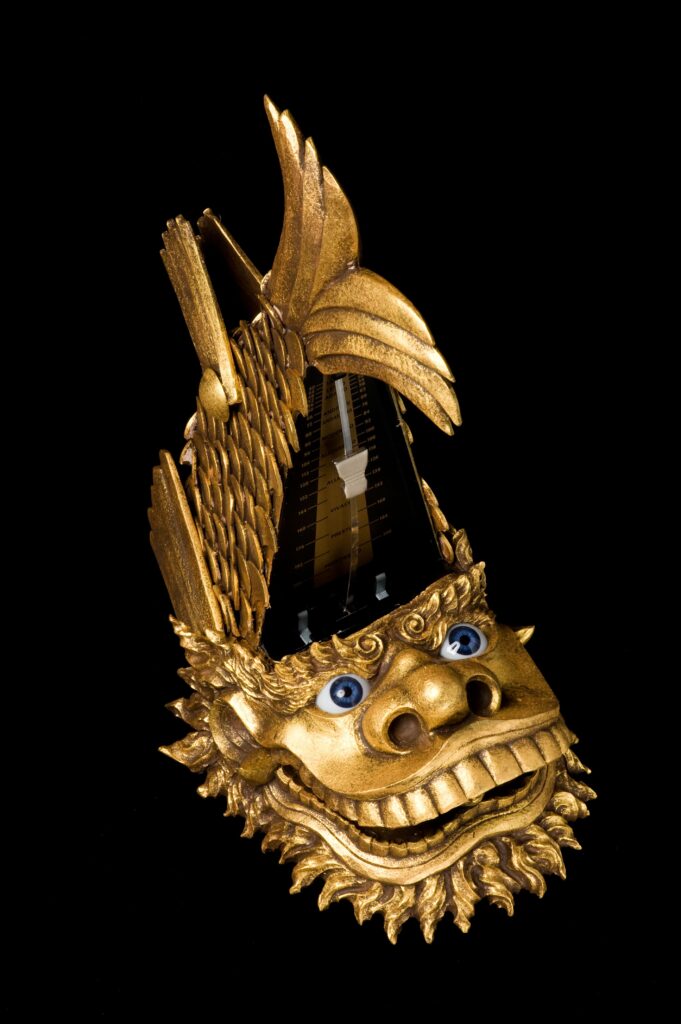
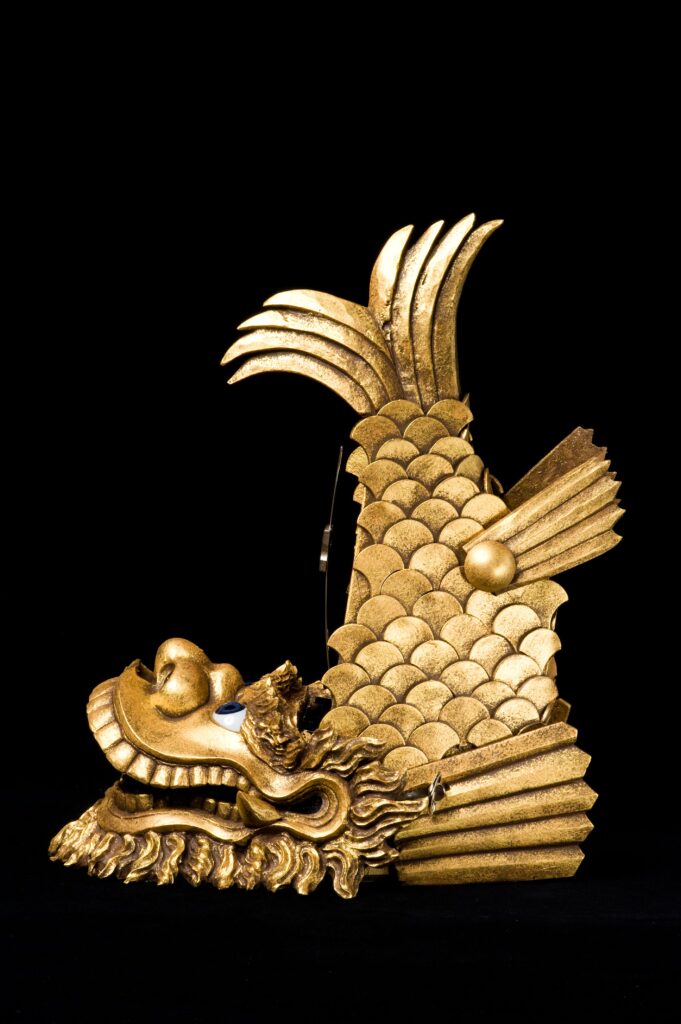
シャチーン Shachin
Above Photos:Naoto Otsubo/Kodansha Ltd.
そこで、さらに名古屋感を追加するべく、名古屋めしの代表、えびふりゃ〜(もはや名古屋めしの範疇に入ってない?)のケースにしましたよ。 果たして、エビフライにケースが必要なのか?はさておき!! ネットでエビフライの食品サンプルを購入し、そこにアルミホイルを巻いて、その上からエポキシパテを盛って、ガワを作り、そこにスカルピーで造形していく方式。
各地のお城のシャチホコを調べたのですが、場所によって、顔のルール(口の形や、耳があったりなかったり)も、パーツ構成も、色の感じも全然違うので、なんとなく気に入ったパーツを組み合わせています。
So, to add a touch of Nagoya, I decided to make a case of “EBIFURYA~“(Japanese fried prawns but a little jokey), a representative of Nagoya-meshi (is it even in the category of Nagoya-meshi anymore?). Does a fried prawn really need a case? But that’s beside the point!
The method is to buy a fried prawn food sample on the Internet, wrap aluminum foil around it, put epoxy putty on top of it to make a body, and then sculpt it with Sculpey.
I researched shachihoko from castles around the world, and found that the rules for the face (mouth shape, ears or no ears), the composition of parts, and the colors are completely different depending on the location, so I combined parts that I kind of liked.
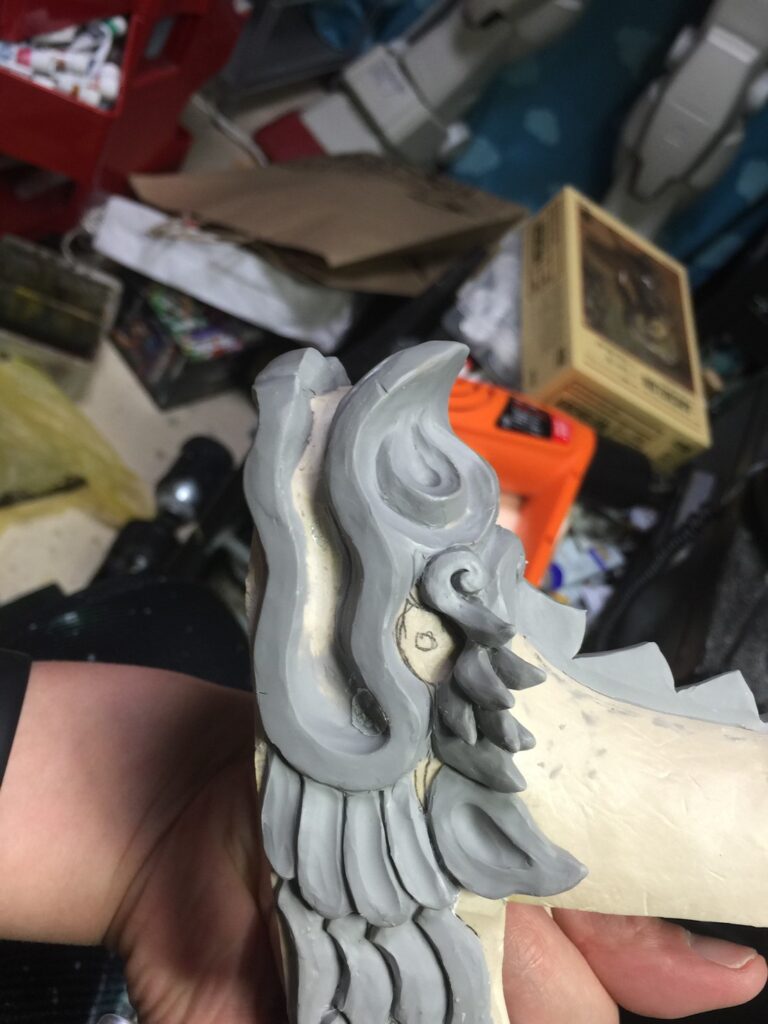

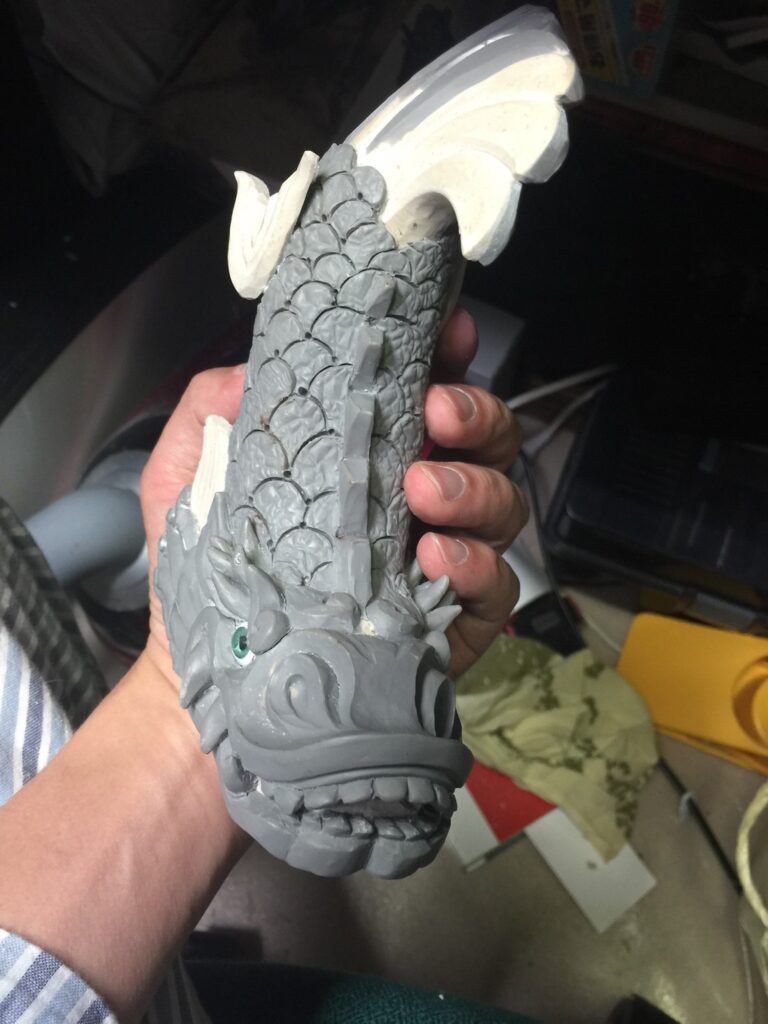
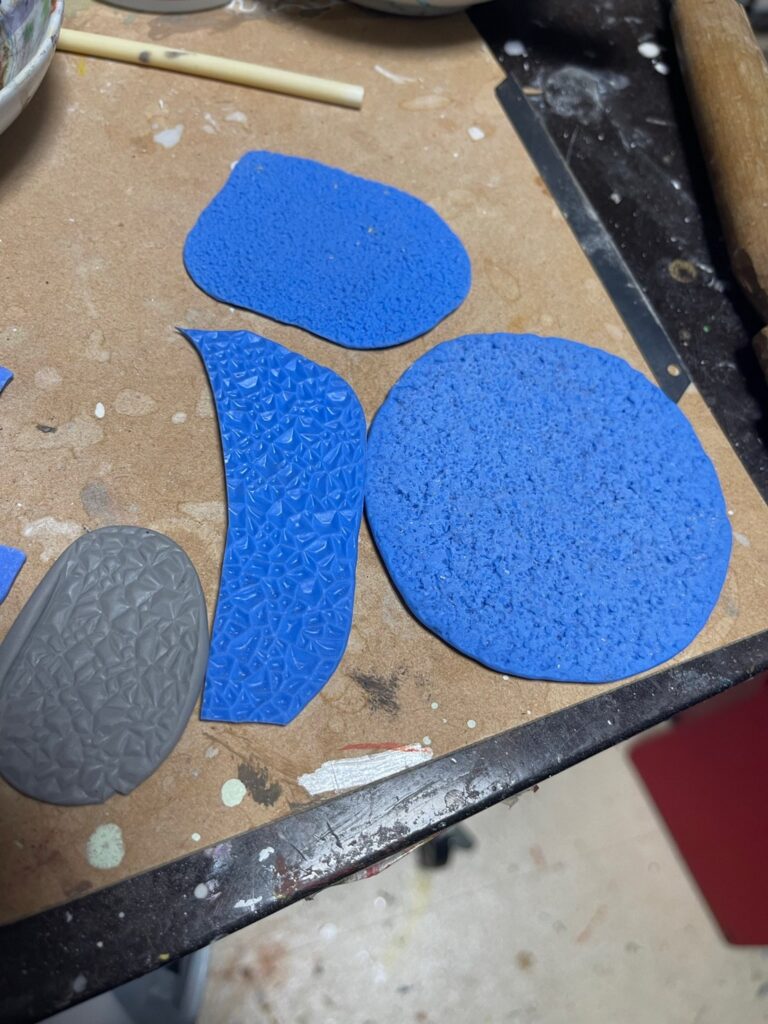
折しも作品制作中は、ドラマ『99.9-刑事専門弁護士-』のロケ中で、地方の古いお屋敷にいました。
そのお屋敷の窓ガラスの模様が、今はあまり使われていないタイプで美しかったので、粘土シリコンゴムを押し付けて複製。それを腹やウロコの部分にスタンプました(当時は、リュックに粘土シリコンゴムを持ち歩いて、気に入ったマチエールがあると、粘土シリコンゴムを押し付けて、持って帰るブームでした)。
During the production of this work, I was on location for the drama “99.9: Criminal Lawyer,” and was at an old house in a rural area. The pattern on the window glass of the house was beautiful and of a type not used much anymore, so I replicated it by pressing clay silicon rubber onto it and I stamped it on the belly and scales. (At that time, it was a boom to carry clay silicone rubber in a backpack, and when I found a matiere I liked, I stamped clay silicone rubber on it and brought it back home.)
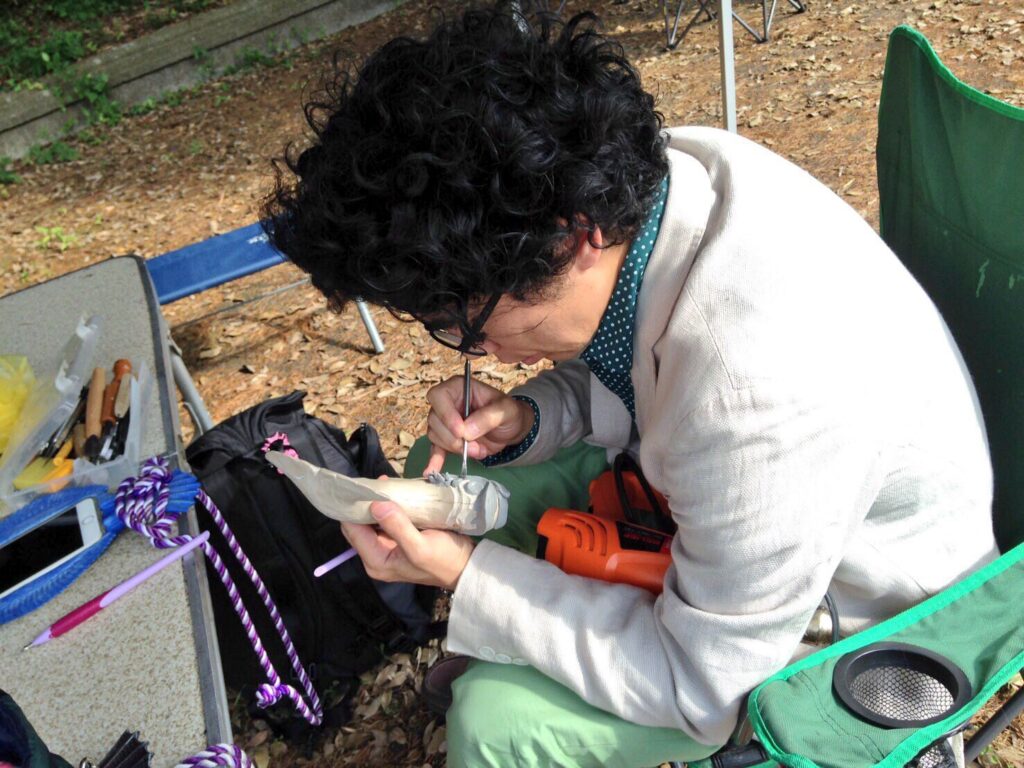
色は、金色にするか、緑青が出た渋い感じにするか迷ったのですが、写真の見映えを考えて、金色と朱色にしました。
I was not sure whether to choose gold or an austere greenish-blue color, but I decided on gold and vermilion for the appearance of the photo.
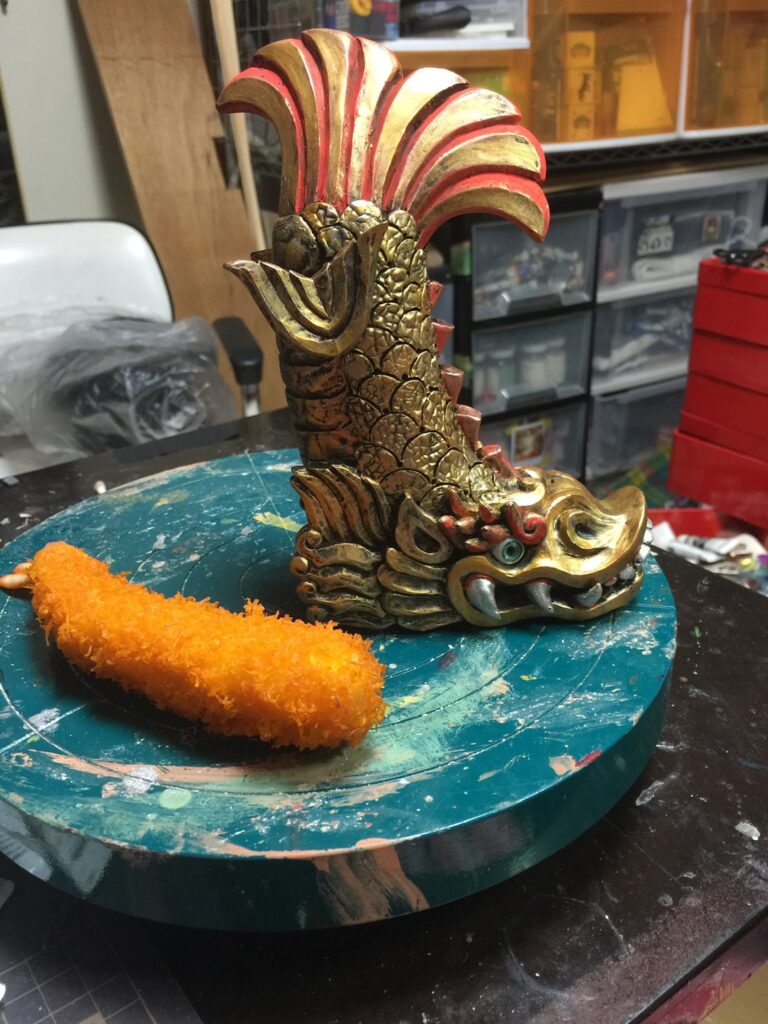
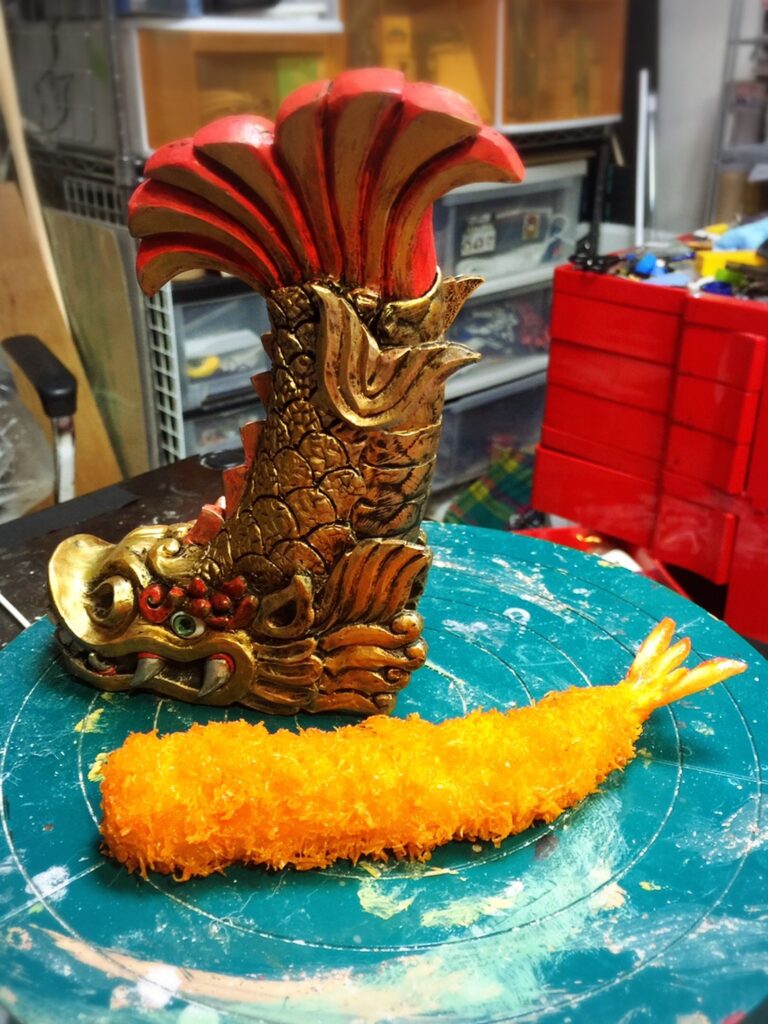
例によって作品名が決まらなかったので、香川さんや松潤先生にいっぱい案を出してもらったんですが、結局自分で考えたこれにしました。何でこれにしたかは、よく覚えていません…。サイズ感が気に入ってます。
As usual, I could not decide on the name of the work, so I asked Mr. Kagawa and Mr. Jun Matsumoto to come up with many ideas, but in the end I decided on this one that I came up with myself. I don’t really remember why I chose this one… I like the size.
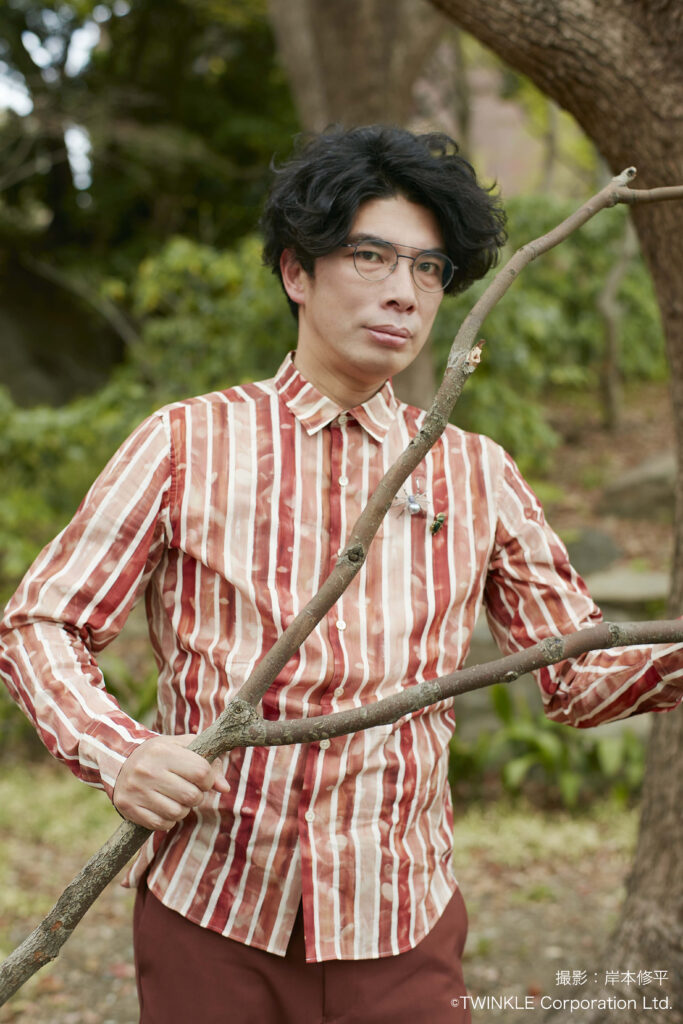
片桐 仁
1973年11月27日生まれ / 埼玉県出身 / 多摩美術大学卒業
ドラマを中心に舞台、映画、ラジオなどで活躍中。近年の主な出演作は「99.9%-刑事専門弁護士-」(TBS)、「あなたの番です」(NTV)、「NHK 連続テレビ小説 エール」(NHK)などがある。
俳優業の傍ら粘土創作活動も行い、2016年から2018年までは「片桐仁不条理アート粘土作品展 ギリ展」にて全国ツアーを開催。2019年は初の海外個展を台湾で開催している。
Jin Katagiri
Born November 27, 1973 / Born in Saitama Prefecture / Graduated from Tama Art University
Active in the stage, movies, radio, etc., mainly in TV dramas series. Major appearances in recent years include “99.9% -Criminal Lawyer-” (TBS), “Your Turn to Kill” (NTV), and “NHK Morning drama series Yell” (NHK).
In addition to acting, he also creates clay, and from 2016 to 2018 he held a national tour at the “Jin Katagiri Absurdity Clay Art Exhibit Giri Ten.” In 2019, he is holding his first overseas solo exhibition in Taiwan.
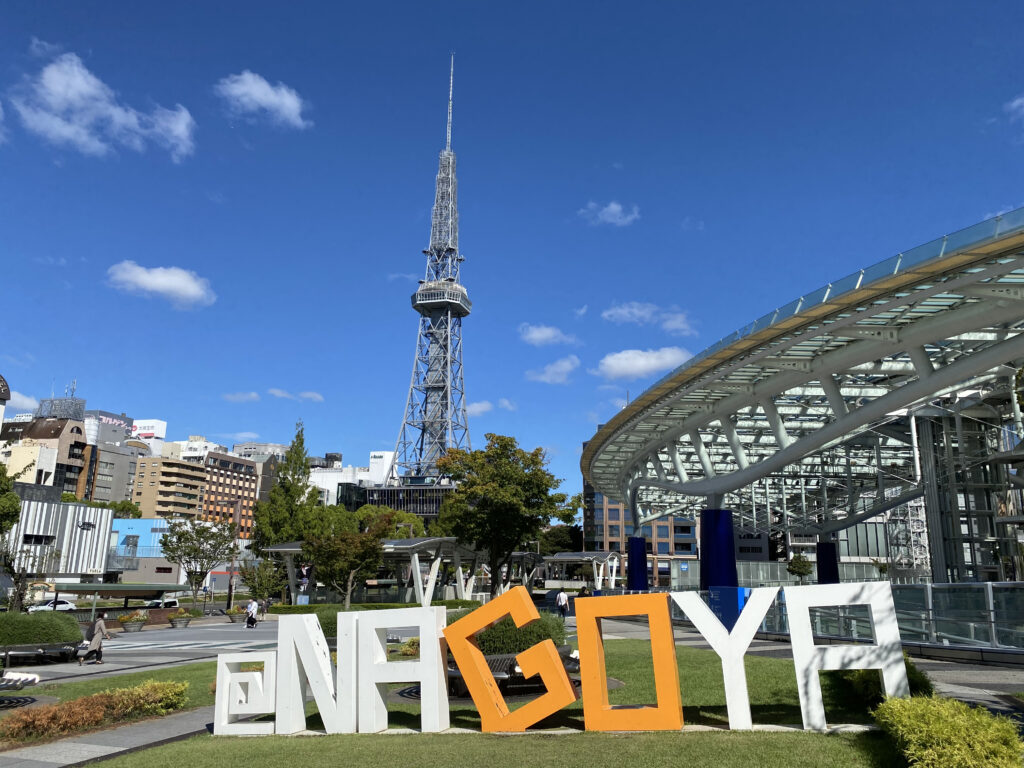
日本列島の中央部にあり、人口は東京都、神奈川県、大阪府に次いで4番目に多く、特に名古屋市は中部地方最大の人口となっているそうです。日本一のもの作り県といわれていて、トヨタ自動車をはじめ、セラミックス、航空宇宙産業、鉄鋼産業など、愛知県は工業の出荷量が40年以上全国一位だそうです。産業以外も農業に適した肥沃な土地が多く、野菜の自給率もそれなりに高いといわれています。
Located in the center of the Japanese archipelago, Aichi Prefecture has the fourth largest population after Tokyo, Kanagawa, and Osaka Prefectures, and Nagoya City in particular is said to have the largest population in the Chubu region. It is said that Aichi Prefecture is the largest manufacturing prefecture in Japan, and has been ranked first in Japan for more than 40 years in terms of industrial shipments, including Toyota Motor Corporation, ceramics, aerospace industry, and steel industry. In addition to industry, there is a lot of fertile land suitable for agriculture, and the self-sufficiency rate of vegetables is also said to be reasonably high.
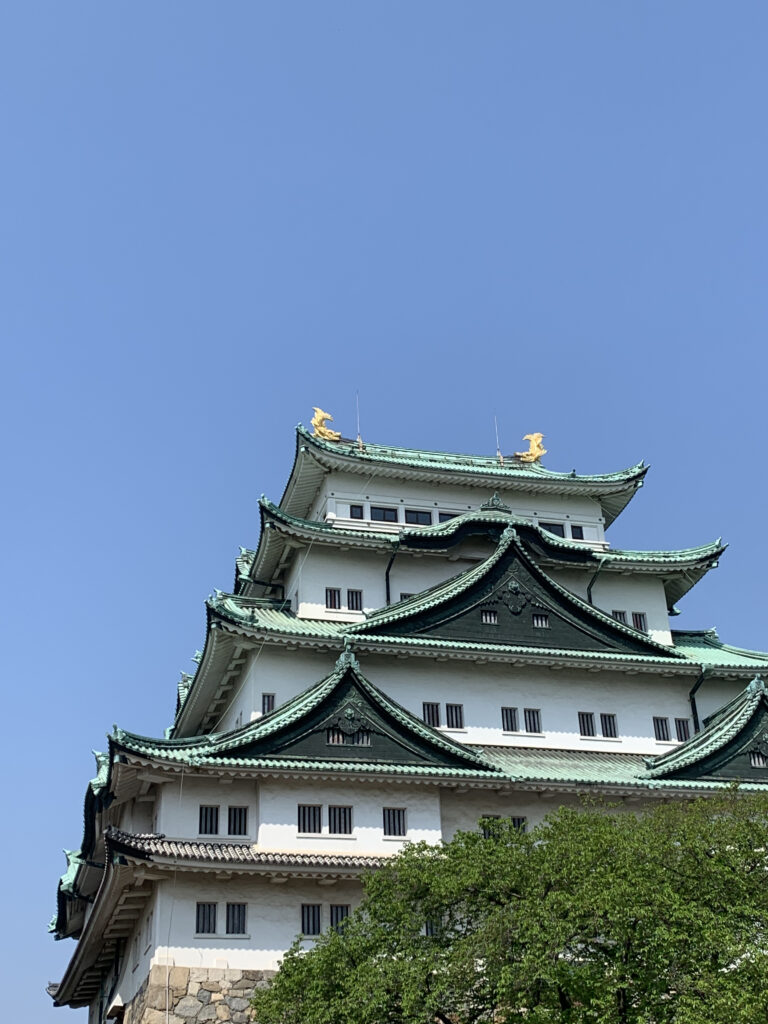
1615年(江戸時代)、徳川家康によって建てられた名古屋城。その名古屋城のシンボルとして、大空高く黄金に輝く金鯱(きんのしゃちほこ、きんしゃち、きんこ)。
シャチホコとは、城の天守や櫓などの屋根に使われる装飾の一つで、鯱は想像上の生き物、頭は龍(または虎とも言われ)胴体は魚、空に向かってそり返る尾を持っている。尾っぽの形が鉾の形にそっくりなのことから「シャチホコ」と名付けられたそうです。
Nagoya Castle was built by Ieyasu Tokugawa in 1615 (Edo period).The golden shachihoko ( Kin-no-shachihoko, Kinshachi, Kinko) shines golden high in the sky as the symbol of the Nagoya Castle.
The shachihoko is one of the ornaments used on the turrets and roofs of castles. The shachi is an imaginary creature, with a dragon (or tiger, as it is also called) for a head, a fish for a body, and a tail that curves back toward the sky. The tail resembles the shape of a spear, hence the name “shachihoko”.
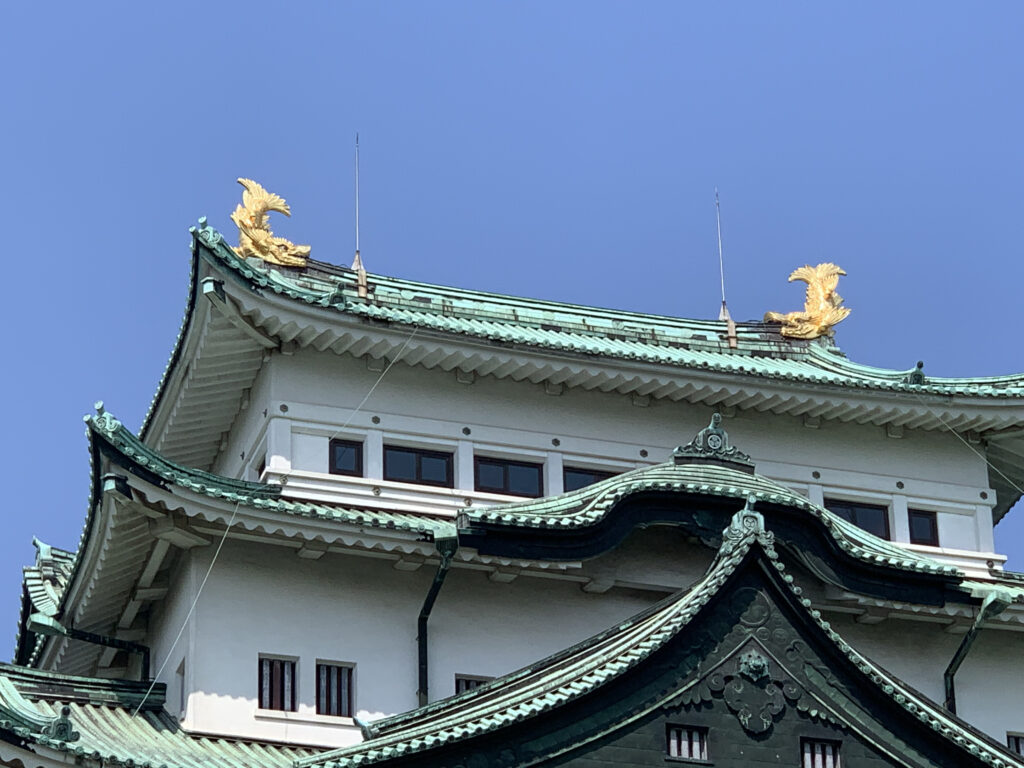
日本は木造建築が中心でしたので、火災が大敵でした。
そこで、建物が火事になると口から水を吐きだして消してくれるという伝説があるといわれているシャチホコを屋根の上に乗せて鬼瓦と同様に守り神として天守閣などに取り付けられたそうです。
Therefore, shachihoko, which are said to be able to extinguish fires by spitting out water from their mouths, were installed on roofs of buildings such as castle towers as protective deities in the same way as onigawara.
江戸時代のころ尾張藩*が政難を迎えると、その度に金鯱の価値があてにされて、明治になるまでに3度改鋳されているそうです。江戸時代〜昭和まで、333年にわたり名古屋城を守ってきた金鯱ですが、1945年の太平洋戦争で天守閣とも焼失しました。その後、天守閣の再建と共に2代目の金鯱が作られたそうです。
※尾張藩は、愛知県西部にあって尾張一国と美濃、三河及び信濃(木曽の山林)の各一部を治めた親藩。徳川御三家中の筆頭格であり、諸大名の中で最高の格式(家格)を有した。尾張国名古屋城(愛知県名古屋市)に居城したので、「名古屋藩」とも呼ばれた。藩主は尾張徳川家。
During the Edo period, when the Owari clan faced political difficulties, the value of the golden shachi was counted on each time, and it was refounded three times before the Meiji era (1868-1912). From the Edo period to the Showa period (1926-1989), kinshachi protected Nagoya Castle for 333 years, but the castle tower and keep were destroyed by fire during the Pacific War in 1945. Later, when the castle tower was rebuilt, a second golden shachi was built.
*The Owari clan was a feudal domain located in the western part of Aichi Prefecture that governed Owari, Mino, Mikawa, and part of Shinano (Kiso mountain forests).
It was the first of the three Tokugawa families and had the highest rank among the various feudal lords. It was also called “Nagoya han” because its castle was located in Nagoya Castle in Owari Province (Nagoya City, Aichi Prefecture). The feudal lord was the Owari Tokugawa family.
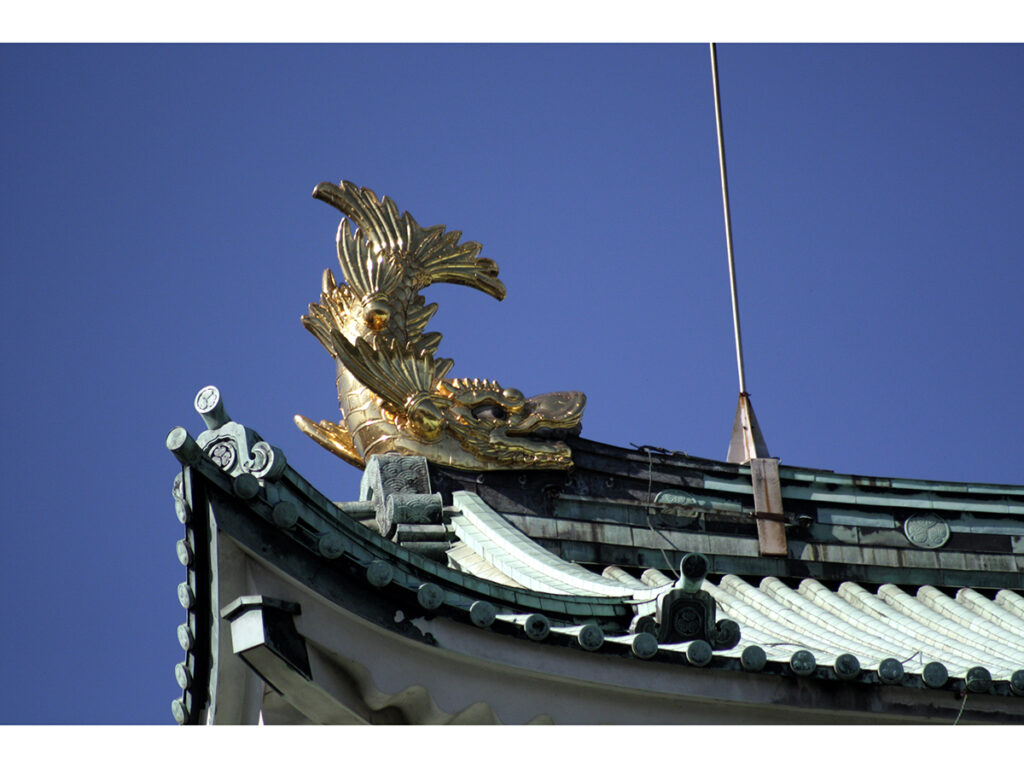
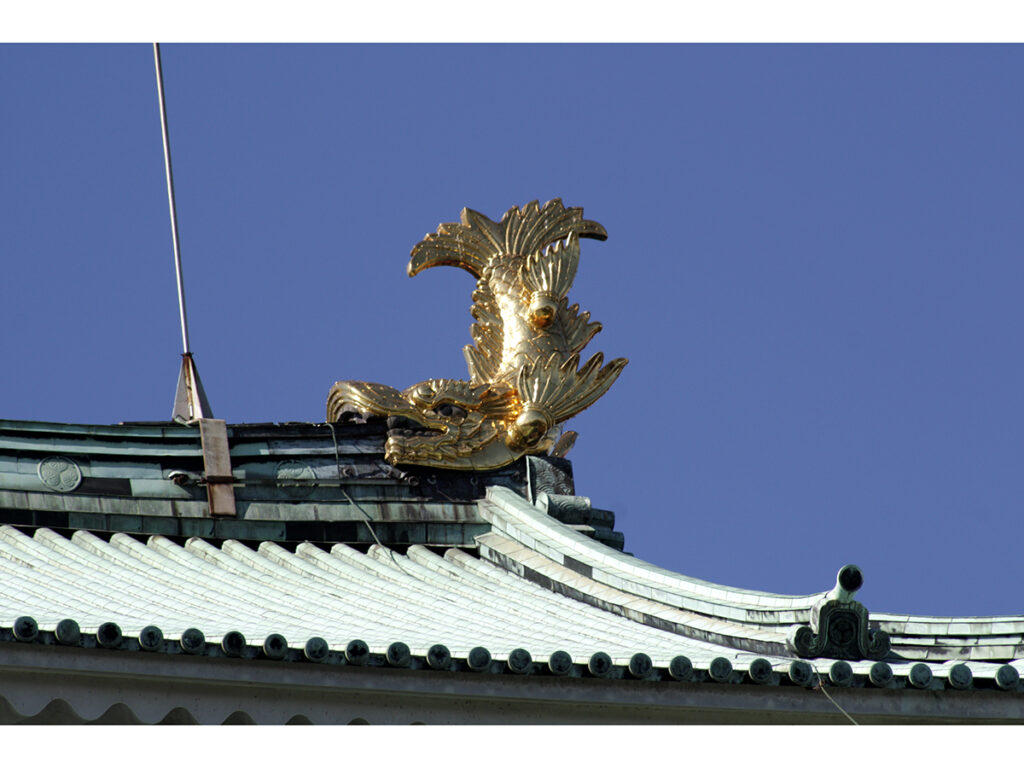
左:北鯱(オス)
総高:2.621m、重量:1,272kg、うろこの枚数:112枚、金量(18k):44.69kg
右:南鯱(メス)
総高:2.579m、重量:1,215kg、うろこの枚数:126枚、金量(18k):43.39kg
Left: Northern Shachi (male)
Total height: 2.621 m, weight: 1,272 kg, number of scales: 112, gold weight (18k): 44.69
Right: Southern Shachi (female)
Total height: 2.579 m, weight: 1,215 kg, number of scales: 126, gold weight (18k): 43.39 kg
名古屋ご当地グルメというと、「味噌カツ」「ひつまぶし」「あんかけスパゲッティ」「海老フライ」「モーニング」などを思い浮かべます。
When we think of Nagoya’s local delicacies, we think of “miso katsu,” “hitu-mabushi,” “ankake spaghetti,” “fried prawns,” “morning meal,” etc.
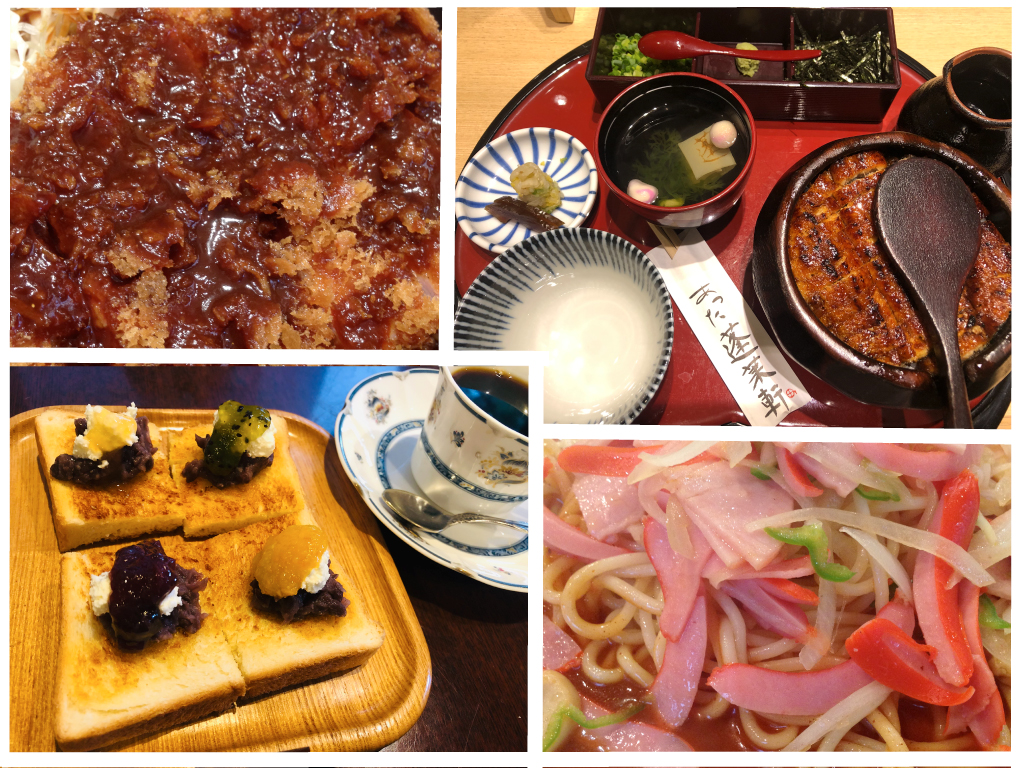
名古屋飯として「海老フライ」が誕生したきっかけは、タモリさん※がTV番組の中で「えびふりゃ〜」といって話をした事だと言われています。海老フライそのものは全国どこにでもあるお料理なので、名古屋の人々も「名古屋ご当地グルメ」という認識はなかったそうです。ですが、愛知県は江戸時代のころから海老をよく食べていたといわれています。名古屋土産で人気の海老せんべい「ゆかり」の板角総本舗や桂新堂などの老舗メーカーは、なんと!約130年もの歴史があるそうです。現在では、ご当地グルメとして「名古屋ならではの海老フライ」を楽しむことができます。
It is said that the birth of “ebifurai” as a Nagoya specialty began when Tamori-san* mentioned it in a TV program as “ebifurya~”. Fried prawns themselves are a dish that can be found anywhere in Japan, so the people of Nagoya were not aware that it was a Nagoya local delicacy.However, it is said that people in Aichi Prefecture have been eating shrimp frequently since the Edo period (1603-1868). Long-established manufacturers such as Itakado Sohonpo and Keishindo of Yukari, a popular Nagoya souvenir shrimp cracker, have a history of about 130 years! “Nagoya’s unique fried prawns” as a local gourmet food.
※タモリこと、森田 一義さんは、日本のお笑いタレント、テレビ司会者です。
※Kazuyoshi Morita, aka Tamori, is a Japanese comedian and television host.
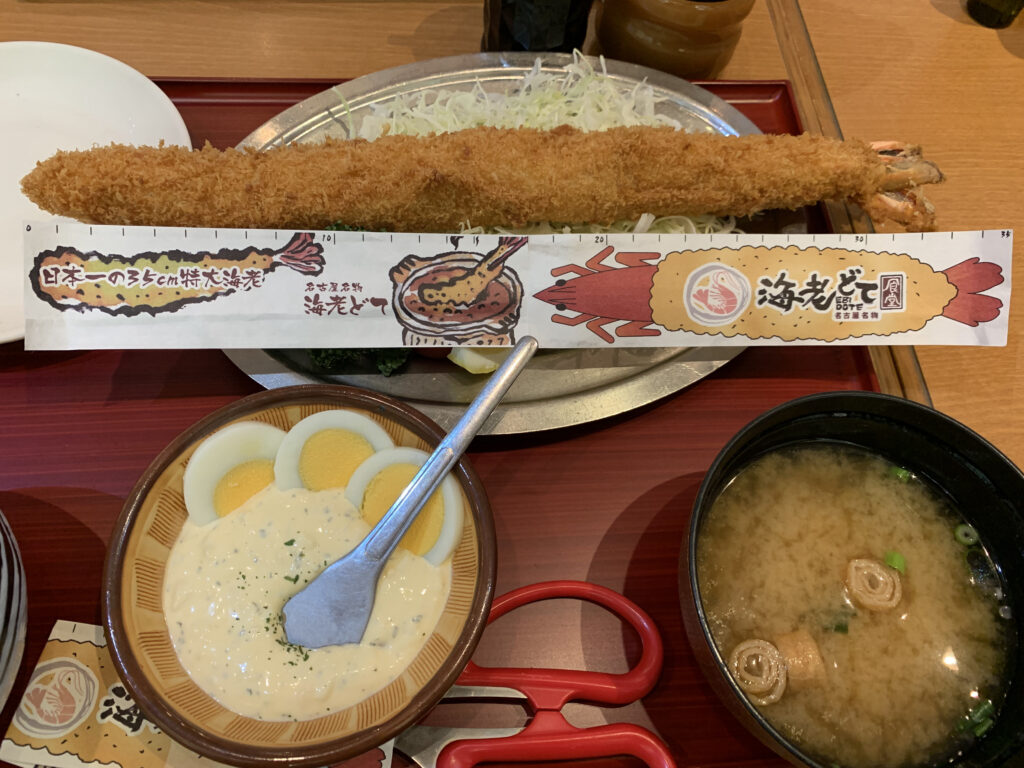
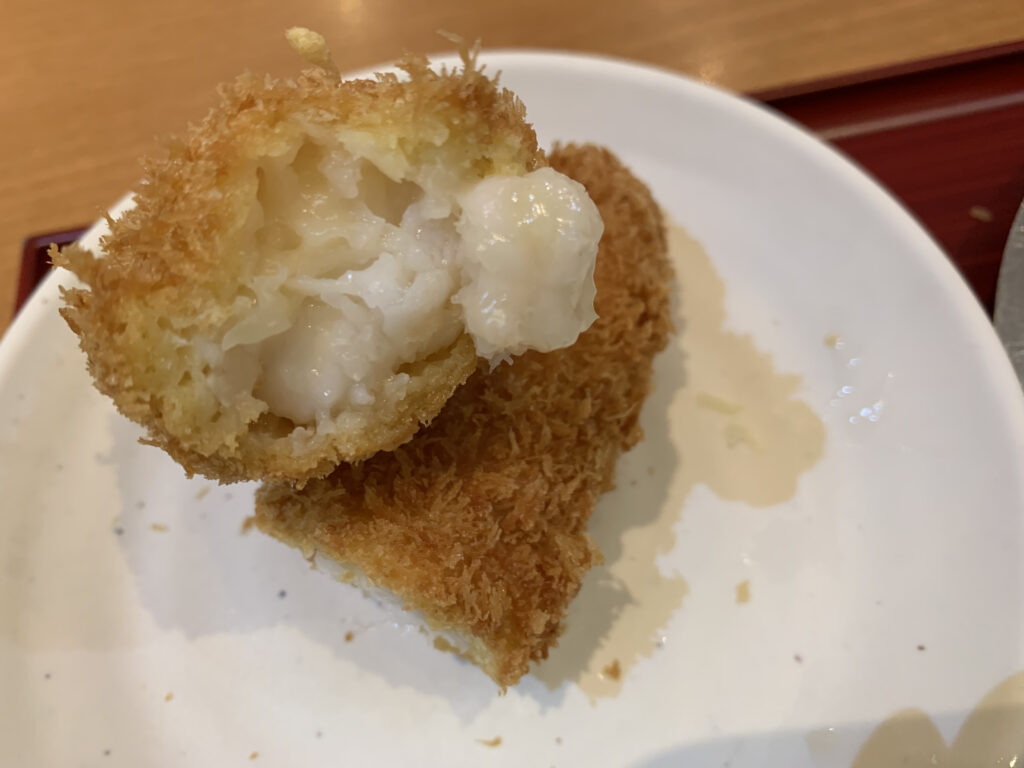
名古屋城の横にあるシャチホコ横丁に、原寸大の金のシャチホコレプリカがあるというので見に行ってみました。すると!フィギュア造形作家の寒河江弘氏が生み出した、ご当地怪獣の「シャチホコング」が展示されていました。偶然にも、今月(5月15日(日))片桐さんが参加予定のイベント「またつまらぬものをつくってしまった」は、寒河江弘氏が原案の「ご当地怪獣」がテーマになっています。久しぶりの新作!どんな怪獣が誕生するのかとても楽しみです。
I went to see a full-size replica of a golden shachihoko in Shachihoko Yokocho, next to Nagoya Castle. Then I saw it! The “Shachihokong,” a local monster created by figure sculptor Hiroshi Sagae, was on display. Coincidentally, the event “I made something boring again” that Mr. Katagiri is scheduled to attend this month (Sunday, May 15) is themed on “local monsters” originally conceived by Hiroshi Sagae. His first new one in a long time! I am very much looking forward to seeing what kind of monster will be created.
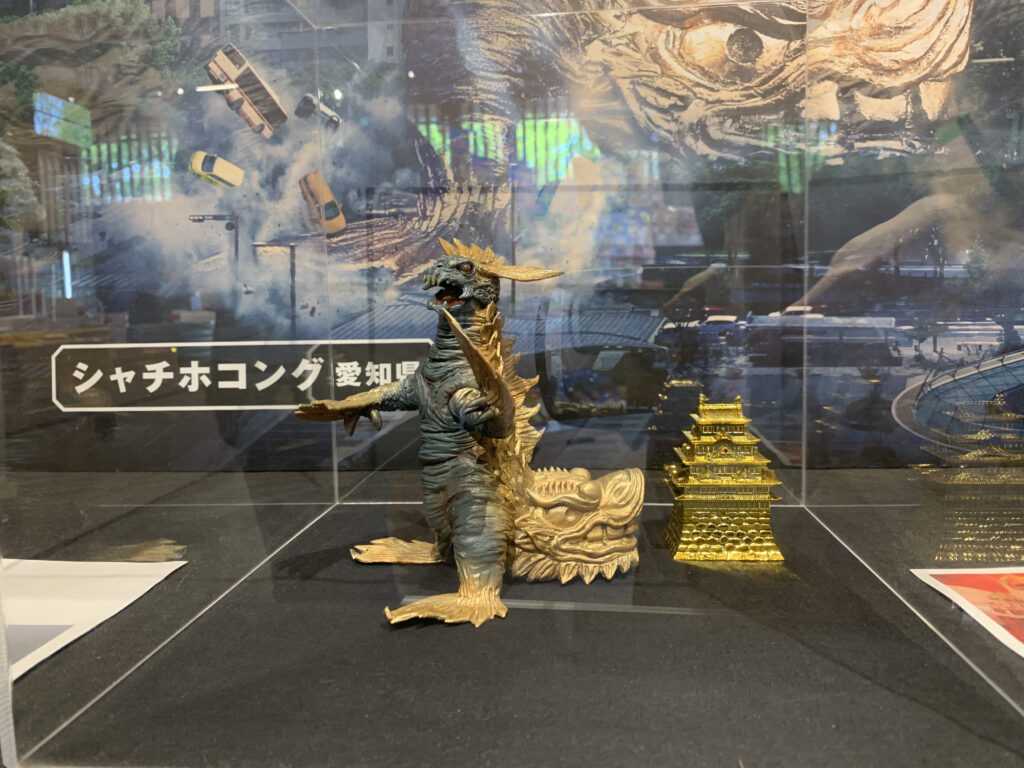
また、つまらぬものを作ってしまった(通称またつま)とは?!
お題にそって作品を作り、「つまらぬものですが…」という奥ゆかしい気持ちで発表する工作エンターテイメントです。
今回は「ご当地怪獣」をテーマに、それぞれゆかりのある地域の怪獣を発表。
What is “Mata tsumaranumonowo tsukuttesshimatta (a.k.a. Matatsuma. It means “I made something boring again”)”
It is a craft entertainment in which participants create a work based on a theme and present it with a reserved “It’s a boring thing, but…” feeling.
This year’s theme was “Local Monsters,” and each participant presented a monster from a region with which he or she was familiar.
●出演
片桐仁 (俳優・彫刻家)
乙幡啓子 (妄想工作家)
たいがー・りー (放課後片想い系妄想発明家)
デハラユキノリ (フィギュアイラストレーター)
●開催日時
2022年5月15日(日)
開場12:00
開演13:00
終了予定16:00
●会場
高松市仏生山交流センター「ふらっと仏生山」
香川県高松市仏生山町甲218-1
・ことでん仏生山駅より徒歩2分
・駐車場あり
・TOYTOYTOYより徒歩10分
●「またつま」チケットについてはこちらをご覧下さい。
●Performers
Jin Katagiri (Actor, Sculptor)
Keiko Otohata (delusional craftsman)
Taiga Lee (delusional inventor with an after-school crush)
Dehara Yukinori (Figure illustrator)
●Date and Time
Sunday, May 15, 2022
Doors open 12:00
Concert begins at 13:00
Scheduled to end at 16:00
●Venue
Takamatsu City Busshozan Exchange Center “Furatto Busshozan”
218-1 Kou, Busshozan-cho, Takamatsu City, Kagawa Prefecture
2 minutes walk from Kotoden Busshozan Station
Parking lot available
Parking lot available
10 min walk from TOYTOYTOY
●For “MATATSUMA” tickets, please see here. (Only in Japanese)
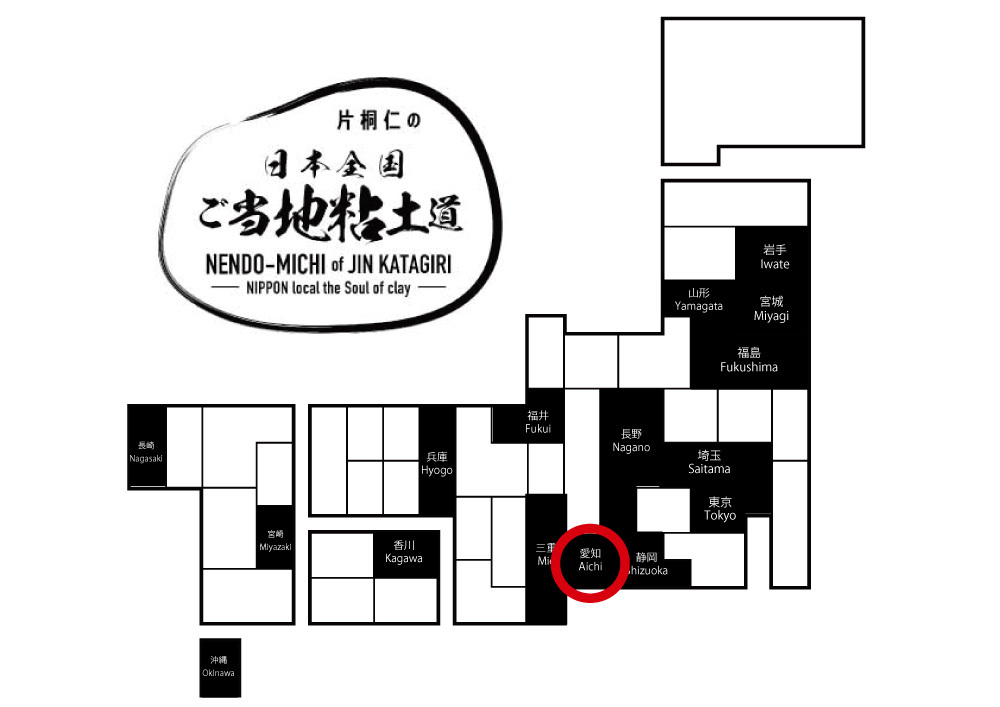
文 : THAT IS GOOD 編集部:藤田
TEXT : THAT IS GOOD editorial department, Fujita